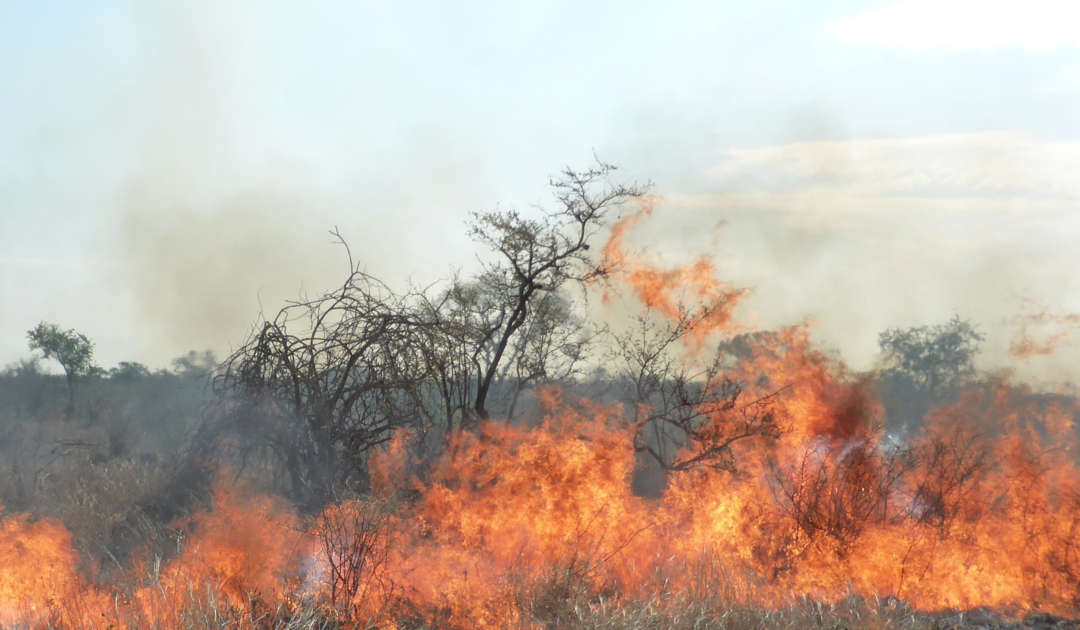Hantson S, Kelley DI, Arneth A, Harrison SP, Archibald S, Bachelet D, Forrest M, Hickler T, Lasslop G, Li F, Mangeon S, Melton JR, Nieradzik L, Rabin SS, Prentice IC, Sheehan T, Sitch S, Teckentrup L, Voulgarakis A, Yue C. 2020. Quantitative assessment of fire and vegetation properties in historical simulations with fire-enabled vegetation models from the Fire Model Intercomparison Project. Geoscientific Model Development Discussions 2020: 1–25 doi: 10.5194/gmd-2019-261.
Lasslop G, Hantson S, Harrison SP, Bachelet D, Burton C, Forkel M, Forrest M, Li F, Melton JR, Yue C, Archibald S, Scheiter S, Arneth A, Hickler T, Sitch S. 2020. Global ecosystems and fire: multi‐model assessment of fire‐induced tree cover and carbon storage reduction. Global Change Biology : early view, doi: 10.1111/gcb.15160.
Teckentrup L, Harrison SP, Hantson S, Heil A, Melton JR, Forrest M, Li F, Yue C, Arneth A, Hickler T, Sitch S, Lasslop G. 2019. Response of simulated burned area to historical changes in environmental and anthropogenic factors: a comparison of seven fire models. Biogeosciences 16: 3883–3910 doi: https://doi.org/10.5194/bg-16-3883-2019.
Li F, Val Martin M, Andreae MO, Arneth A, Hantson S, Kaiser JW, Lasslop G, Yue C, Bachelet D, Forrest M, Kluzek E, Liu X, Mangeon S, Melton JR, Ward DS, Darmenov A, Hickler T, Ichoku C, Magi BI, Sitch S, Werf GR van der, Wiedinmyer C, Rabin SS. 2019. Historical (1700–2012) global multi-model estimates of the fire emissions from the Fire Modeling Intercomparison Project (FireMIP). Atmospheric Chemistry and Physics 19: 12545–12567 doi: https://doi.org/10.5194/acp-19-12545-2019.
Forkel M, Andela N, Harrison SP, Lasslop G, Marle M van, Chuvieco E, Dorigo W, Forrest M, Hantson S, Heil A, Li F, Melton J, Sitch S, Yue C, Arneth A. 2019. Emergent relationships with respect to burned area in global satellite observations and fire-enabled vegetation models. Biogeosciences 16: 57–76 doi: https://doi.org/10.5194/bg-16-57-2019.
Marle MJE van, Kloster S, Magi BI, Marlon JR, Daniau A-L, Field RD, Arneth A, Forrest M, Hantson S, Kehrwald NM, Knorr W, Lasslop G, Li F, Mangeon S, Yue C, Kaiser JW, Werf GR van der. 2017. Historic global biomass burning emissions for CMIP6 (BB4CMIP) based on merging satellite observations with proxies and fire models (1750–2015). Geoscientific Model Development 10: 3329–3357 doi: https://doi.org/10.5194/gmd-10-3329-2017.
Andela N, Morton DC, Giglio L, Chen Y, Werf GR van der, Kasibhatla PS, DeFries RS, Collatz GJ, Hantson S, Kloster S, Bachelet D, Forrest M, Lasslop G, Li F, Mangeon S, Melton JR, Yue C, Randerson JT. 2017. A human-driven decline in global burned area. Science 356: 1356–1362 doi: 10.1126/science.aal4108.
Rabin SS, Melton JR, Lasslop G, Bachelet D, Forrest M, Hantson S, Kaplan JO, Li F, Mangeon S, Ward DS, Yue C, Arora VK, Hickler T, Kloster S, Knorr W, Nieradzik L, Spessa A, Folberth GA, Sheehan T, Voulgarakis A, Kelley DI, Prentice IC, Sitch S, Harrison S, Arneth A. 2017. The Fire Modeling Intercomparison Project (FireMIP), phase 1: experimental and analytical protocols with detailed model descriptions. Geosci. Model Dev. 10: 1175–1197 doi: 10.5194/gmd-10-1175-2017.
Hantson S, Arneth A, Harrison SP, Kelley DI, Prentice IC, Rabin SS, Archibald S, Mouillot F, Arnold SR, Artaxo P, Bachelet D, Ciais P, Forrest M, Friedlingstein P, Hickler T, Kaplan JO, Kloster S, Knorr W, Lasslop G, Li F, Mangeon S, Melton JR, Meyn A, Sitch S, Spessa A, van der Werf GR, Voulgarakis A, Yue C. 2016. The status and challenge of global fire modelling. Biogeosciences 13: 3359–3375 doi: 10.5194/bg-13-3359-2016.



